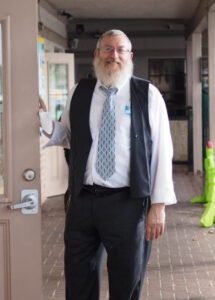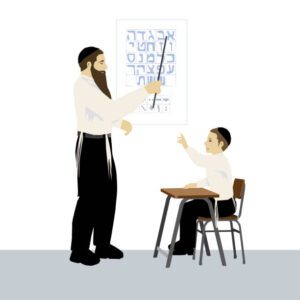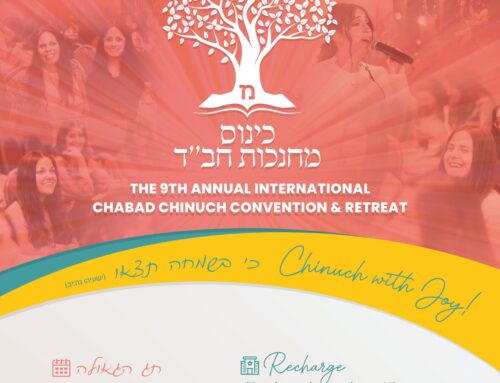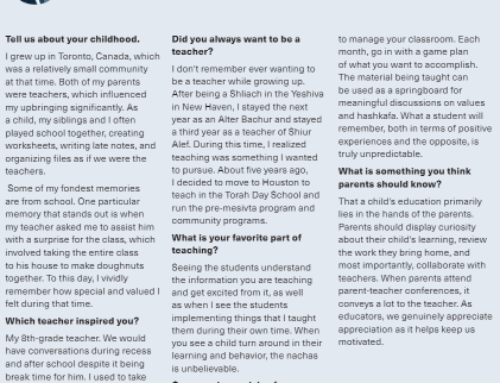 The following is an excerpt from Rabbi Yossie Denburg’s Blog, Timeless Torah.
The following is an excerpt from Rabbi Yossie Denburg’s Blog, Timeless Torah.
Rabbis often romanticize about the past. They reminisce about the “good-old-days” and bemoan how everything has gone downhill since then. While that is true in some areas, in others there has been drastic improvement. One of those is Jewish schools and their teachers. They have stepped up to the plate. This is how they’ve done it.
This past week, we read about Shushan’s Jewish school. There Mordechai gathered 22,000 students, and not much else. No mention of other teachers, homework, extra-curricular activities, a discipline policy, or the cost of tuition. Since then, much has changed. But even in my lifetime schools have made huge strides forward. At first glance this is anecdotal, as this is only my journey as a student (1960s) to Dean at LHA (LUBAVITCH HEBREW ACADEMY). Nonetheless, there is evidence that many other schools have made similar progress.
Slowly, education became a career choice. Teachers were taking courses, learning pedagogy, turning to professional coaches, and adapting new techniques both from Torah itself and from experts beyond the Jewish educational ghetto. No longer were they merely conveying information, they were channeling inspiration. Obviously, this was not 100% true for all Jewish schools or all teachers, but more was being expected. Why? Because more was needed.
Values that used to be community standards, and certain dos & don’ts that were obvious fifty years ago, were no longer: like how to comport oneself in a Shul, respect for elders and other basic boundaries. Suddenly, they became a school’s responsibility, and hence part of a teacher’s expected workload. Left with no choice, Jewish schools took on the challenge. They became citadels of stability for children living with inconsistency; they modeled Jewish values and ethics, and provided guidance to meet students’ social and emotional needs.
And for some, they also became fortresses against fear. For those whose non-Jewish surroundings reflected the latest anti-Semitic slurs, schools became the supportive communities that stood strong in times of crisis, where students, staff, and families came together to learn, grow, and even grieve, and where friendships formed would last a lifetime.
Unlike Jewish schools of the past that may have taught children how to hide, now we teach youngsters how to stand tall and proud. No longer do we promote a victim mentality, but a strong Jewish identity. But today’s great Jewish schools go even further. Developing one’s own religiosity while being indifferent to others is no longer educationally kosher, now we instill in our youth the courage needed to pro-actively reach out to those in non-Jewish environments. At LHA, these activities include visiting Jews in senior centers, challenging our pupils to spend their spare time to share Mitzvahs like Lulav & Esrog, Chanukah candles and Shalach Manos. This is an essential component of our broader Dirah B’tachtonim campaign (subject for another article) which is integrated into every subject and in every grade.
Never before did we test our schools’ capacity to inspire our youth to live as identified and engaged Jews in an ‘open’ society. Until recently, society was ‘closed’ to us. Our curriculum therefore must be both substantive and relevant. It must lean on the wisdom of our ancient texts even as it illuminates our glorious future. And it should enable our children to think for themselves, about themselves, their people, and their G-d in a way that is uniquely and beautifully Jewish. Finally, today’s educators must foster the global notion of Klal Yisrael (one interconnected people) regardless of ideological differences.
Until now, we have never asked Jewish schools to be both intensive and inventive, immersive and innovative. To be sure, Jewish schools are not flawless institutions, and quality surely varies. They struggle to create and deliver the best programs for both those with special educational needs and those with atypically high intelligence (not a worry prevalent in the past). And they must do it all with enthusiasm, joy and positive reinforcement. That is an unusually tall order for even the most perfect of our imperfect institutions.
Yet our schools still have a way-to-go. For them to truly improve and achieve their absolute best, they simply cannot do it alone. They need partners. Our most in-depth research shows that dollar-for-dollar, Jewish day schools are the single best investment for securing a literate and committed cadre of Jews to lead us into our vibrant future. This requires more than just hiring our ‘best’ teachers. After all, how many ‘Mordechais’ are there that can effectively manage 22,000 students in one classroom? Perhaps that is why there was no tuition.
It will take community vision and strategic planning between philanthropists, foundations & faculty reimagining how community funds are raised and spent. It will require well-executed, short and long-term investments. And when we successfully marry our resources to the right educators we will be able to proclaim with confidence, Am Yisrael Chai, the People of Israel Lives and will continue to do so far into the future!





